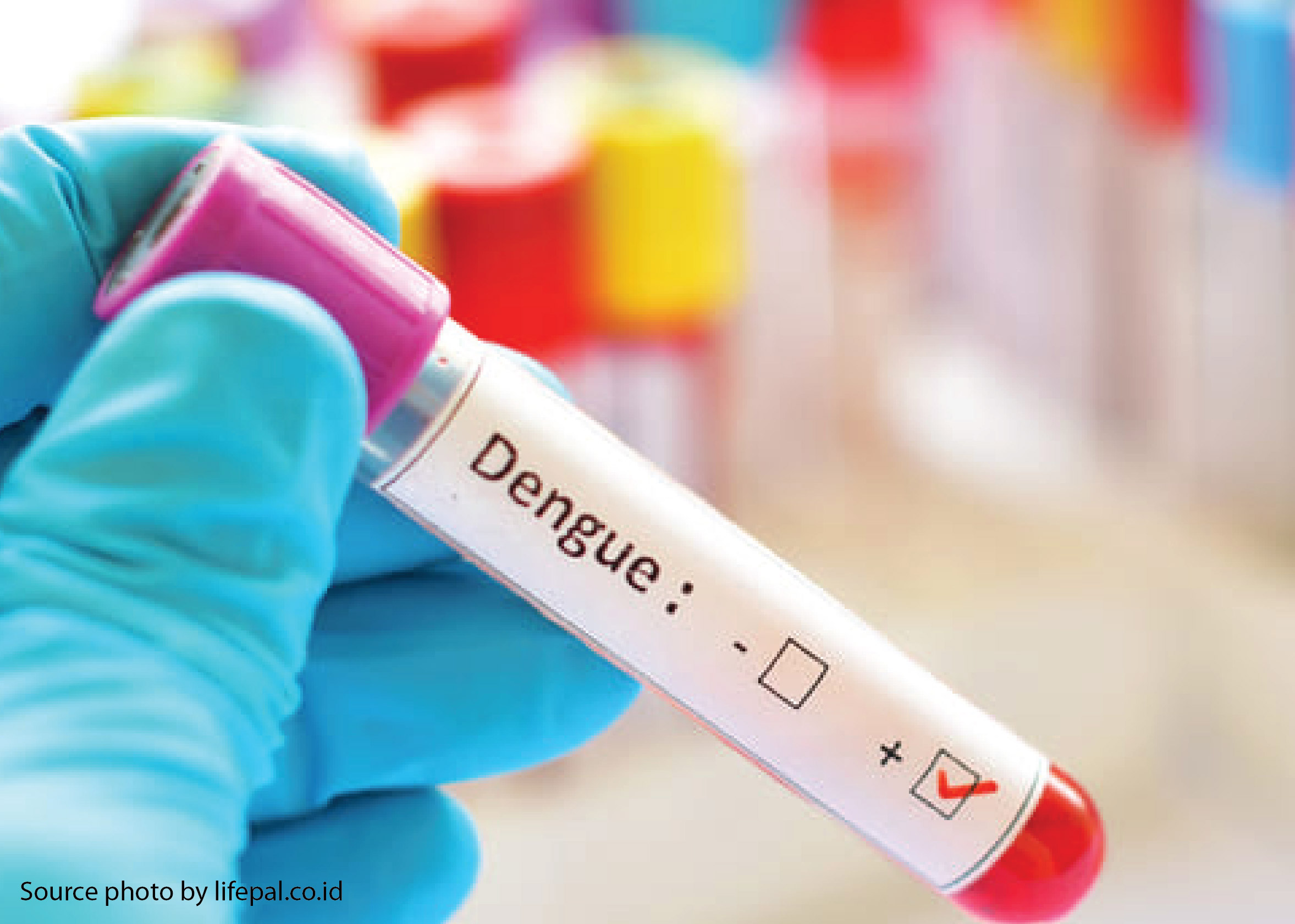DIFFERENCES IN LED VALUES IN DENGUE FEVER PATIENTS WITH HEMOCONCENTRATION AND NOT HEMOCONCENTRATION

Downloads
Background: Patients with dengue fever with hemoconcentration will experience plasma tearing (loss of plasma protein) which will affect the value of the Erythrocyte Sedimentation Rate (LED). Plasma proteins that play a role in influencing the value of the Sedimentation Rate (LED) are fibrinogen and globulins. An erythrocyte sedimentation (LED) examination measures the degree of erythrocyte deposition in a blood sample over a period of time. LEDs are sensitive but not specific tests. Purpose: To determine the difference in LED values of DHF patients with hemoconcentration and not hemoconcentration. Method: Observational analytic, 30 samples with criteria for dengue fever patients with hemoconcentration and not hemoconcentration were examined at the Clinical Pathology Laboratory of Haji Hospital Surabaya in March - April 2019. The study used an independent t test with SPSS 16.0 program to determine whether there were differences in LED values in dengue fever patients with hemoconcentration and not hemoconsetration. Result: The results of the Independent t test showed that there were significant differences between the results of the erythrocyte sedimentation rate in patients with dengue fever with hemoconcentration and not hemoconsetration with Sig. (2-failed) of 0.00 (p <0.005). Conclusion: There are significant differences in sediment rate results with the Westergreen blood method in patients with dengue fever who experience hemoconcentration and who do not experience hemoconcentration.
Bakta, I Made. 2006. Hematologi Klinik Ringkas. Jakarta: EGC.
Departemen Kesehatan Republik Indonesia (Depkes RI). (2003). Pencegahan dan Penanggulangan Penyakit Demam Dengue dan Demam Berdarah Dengue. Jakarta: Direktorat Jendral Pemberantasan Penyakit Menular dan Penyehatan Lingkungan pemukiman (DITJEN PPM & PL).
Gandasoebrata, R. 1985. Penuntun Laboratorium Klinik. (3 ed). Jakarta: Dian Rakyat.
Hadinegoro, Rezeki, S., Soegianto, S., Soeroso, T., Waryadi, S. 2001. Tata Laksana Demam Berdarah Dengue di Indonesia. Jakarta: Ditjen PPM & PL Depkes & Kesos RI.
Irwadi, D., Arif, M., Hardjoeno. 2007. Gambaran Serologis IgM-IgG Cepat dan Hematologi Rutin Penderita DBD. Indonesian Journal of Clinical Pathology and Medical Laboratory Vol. 13(2). Pp. 45-48.
Kowalak, J. P. 2010. Buku Pegangan Uji Diagnostik (Edisi 3). Mustaqin H, Ramadhani D, editors. Jakarta: EGC.
Kresno. 1998. Pedoman Pemeriksaan Laboratorium dan Diagnostik. Ed 6. Jakarta: EGC.
Lestari, K. 2007. Epidemiologi Dan Pencegahan Demam Berdarah Dengue (DBD) Di Indonesia. Indonsia: Farmaka.
Purwanto. 2002. Pemeriksaan Laboratorium Pada Penderita Demam Berdarah Dengue. Media Penelitian dan Pengembangan Kesehatan Vol. 12(1). Pp. 14-19.
PUSDIKNAKES DEPKES RI. 1989. Hematologi, Jilid I. Jakarta: PUSDIKNAKES DEPKES RI.
Souza, L. J., Reis, A. F. F., Almeida, F. C. R., Souza, L. A., Abukater, M., Gomes, M. A. E., et al. 2008. Alterations in the erythrocyte sedimentation rate in dengue patients: analysis of 1,398 cases. Braz J Infect Dis. Vol. 12(6). Pp. 472-5.
Stanislaus. 2006. Pedoman Analisis Data dengan SPSS 16.0. Yogyakarta: Penerbit Graha Ilmu.
Sujianto, A. E. 2009. Aplikasi Statistic dengan SPSS 16.0. Jakarta: Prestasi Pustaka Publisher.
WHO. 2003. Pencegahan dan Penanggulangan Penyakit Demam Dengue dan Demam Berdarah Dengue. Jakarta: WHO & Departemen Kesehatan RI.
Copyright (c) 2019 Journal of Vocational Health Studies

This work is licensed under a Creative Commons Attribution-NonCommercial-ShareAlike 4.0 International License.
- The authors agree to transfer the transfer copyright of the article to the Journal of Vocational Health Studies (JVHS) effective if and when the paper is accepted for publication.
- Legal formal aspect of journal publication accessibility refers to Creative Commons Attribution-NonCommercial-ShareAlike (CC BY-NC-SA), implies that publication can be used for non-commercial purposes in its original form.
- Every publications (printed/electronic) are open access for educational purposes, research, and library. Other that the aims mentioned above, editorial board is not responsible for copyright violation.
Journal of Vocational Health Studies is licensed under a Creative Commons Attribution-NonCommercial-ShareAlike 4.0 International License














































